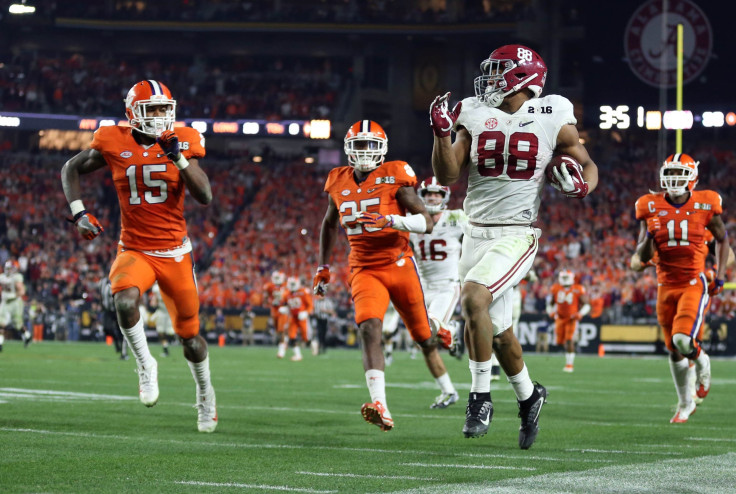Could NCAA Football Concussion Prevention Tackling Rules Lead To Lower-Body Injuries? Study Suggests That Could Be The Case

Football in America has had to grapple with the gruesome realities of concussions and subconcussive hits to the head that have been linked to the degenerative brain disease chronic traumatic encephalopathy, commonly referred to as CTE. But according to the results of a study released Saturday, new NCAA tackling rule changes that penalize head-to-head contact may have unintentionally led to an uptick in injuries to the lower body.
The rule changes have encouraged tacklers to go after lower extremities, which has led to higher rates of injuries to knees, ankles and thighs, according to researchers who presented their work at the American Orthopaedic Society for Sports Medicine’s Specialty Day in Orlando, Florida. The NCAA introduced rules for "targeting" defenseless players in 2008 and made a major change by stiffening penalties for the 2013 season. It also released updated concussion prevention guidelines in 2014. But the researchers of the study presented Saturday said NCAA rules have not necessarily worked in fighting concussions.
“Nearly a third of all concussions in collegiate athletics occur during football. With the relatively recent rule changes, concussion rates have not decreased. Our analysis of the NCAA Injury Surveillance Database, though, noted increased rates of ankle and knee injuries, which may result in osteoarthritis and disability issues later in life for these athletes,” Dr. Robert Westermann, who is affiliated with the University of Iowa Hospitals & Clinics, said in a press release. “Athletes may be making contact lower on the body to avoid the head-to-head contact and thus stiffer game penalties.”
Westermann and his team of researchers studied 57 programs using data from the NCAA Injury Surveillance Database, which is collected through program athletic trainers and physicians. They compared injury rate ratios — specifically looking at lower-extremity injuries and concussions — from the seasons 2009-12 and 2012-15, after tackling rules had been changed. Westermann reported they found a trend of increased lower-extremity injuries.
“Our research is the first to report trends in injury patterns since 'targeting' rule changes took effect. Continued surveillance to examine these trends, and a more in-depth examination of how targeting rule changes are impacting injuries both at the targeted site and at other parts of the body, needs to be performed to prevent long-term health issues,” he said.
The study comes just after the Ivy League announced Tuesday it would ban full-contact hitting during regular-season football practices, a drastic step toward reducing injuries during practices.
© Copyright IBTimes 2024. All rights reserved.






















